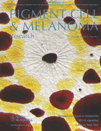
Pigment Cell & Melanoma Research
Scope & Guideline
Unveiling Innovations in Skin Biology and Cancer Research.
Introduction
Aims and Scopes
- Pigmentation Biology:
Research exploring the mechanisms of pigmentation, including the genetic, biochemical, and environmental factors that influence melanin production and distribution in various organisms. - Melanoma Pathogenesis and Progression:
Investigations into the molecular and cellular changes that lead to melanoma development, progression, and metastasis, including studies on genetic mutations, tumor microenvironment, and immune evasion. - Therapeutic Strategies and Clinical Outcomes:
Exploration of novel treatment approaches for melanoma, including immunotherapy, targeted therapies, and combination treatments, with a focus on clinical efficacy and patient outcomes. - Diagnostic and Prognostic Biomarkers:
Identification and validation of biomarkers for early detection, prognosis, and treatment response in melanoma patients, enhancing personalized medicine approaches. - Pigmentary Disorders and Related Conditions:
Studies on various pigmentary disorders, including vitiligo and albinism, their pathophysiology, and therapeutic interventions.
Trending and Emerging
- Genomic and Molecular Characterization of Melanoma:
Recent publications increasingly focus on the genomic landscape of melanoma, exploring genetic mutations, epigenetic modifications, and their implications for treatment, which is essential for precision medicine. - Immunotherapy and Immune Microenvironment:
Research on the role of the immune system in melanoma, particularly studies involving immunotherapy responses, immune checkpoint inhibitors, and tumor microenvironment interactions, has gained significant traction. - Innovative Therapeutic Approaches:
There is a growing interest in novel therapeutic strategies, including combination therapies and the use of biomarkers to predict treatment responses, highlighting the shift towards personalized medicine. - Pigment Cell Biology and Its Clinical Relevance:
Research that connects basic pigment cell biology with clinical implications, particularly in understanding skin cancer and pigment-related disorders, is becoming increasingly prominent. - Single-Cell and Multi-Omics Approaches:
Emerging methodologies, including single-cell RNA sequencing and multi-omics analyses, are being adopted to gain deeper insights into the heterogeneity of melanoma and its microenvironment.
Declining or Waning
- Basic Animal Models of Melanoma:
The use of traditional animal models for melanoma research, such as xenografts or older transgenic models, has seen a decrease as newer technologies and advanced models, including humanized mice and organoids, gain traction. - Epidemiological Studies without Molecular Insights:
Epidemiological research focusing solely on incidence and survival rates without integrating molecular or genetic analyses has become less frequent, as there is a shift towards studies that combine clinical data with molecular profiling. - Historical Reviews of Melanoma Treatments:
While historical perspectives on melanoma treatments were once prevalent, there is a waning interest in this area as the focus shifts towards cutting-edge therapies and novel treatment strategies.
Similar Journals

CELL PROLIFERATION
Exploring Innovations in Cellular and Molecular BiologyCELL PROLIFERATION, published by Wiley, is a leading open-access journal that has been at the forefront of research since its inception in 1968. With an impact factor that solidifies its position in the Q1 category of both Cell Biology and Medicine (Miscellaneous), this journal serves as a premier platform for disseminating groundbreaking studies in the field of cellular and molecular biology. The journal is renowned for its rigorous peer-review process and comprehensive coverage of topics related to cell growth, division, and differentiation, making it an invaluable resource for researchers, professionals, and students alike. With its notable Scopus ranking of #30 in Biochemistry, Genetics, and Molecular Biology: Cell Biology, and a robust open access model since 2019, CELL PROLIFERATION ensures that cutting-edge research is accessible to a global audience, fostering collaboration and innovation across the scientific community. Located in the United Kingdom, the journal remains committed to enhancing the understanding of cellular processes, thereby influencing developments in medicine and biotechnology.

MELANOMA RESEARCH
Illuminating the Path to Melanoma Understanding.MELANOMA RESEARCH is a leading journal dedicated to the exploration and dissemination of innovative research in the field of melanoma and skin cancers. Published by Lippincott Williams & Wilkins, this journal has been a pivotal resource since its inception in 1991, continually evolving to encompass significant advancements within dermatology and oncology through 2024. With a focus on high-quality, peer-reviewed articles, it offers critical insights into cellular mechanisms, treatment strategies, and emerging therapies pertinent to melanoma. It currently holds a Q3 category in Cancer Research and a Q2 category in Dermatology, while also ranking within the 65th percentile for Medicine Dermatology according to Scopus. Although not an open-access journal, MELANOMA RESEARCH ensures accessibility through various institutional subscriptions, making it an invaluable asset for researchers, professionals, and students engaged in pioneering melanoma research.

Molecular & Cellular Oncology
Unraveling the complexities of cancer biology.Molecular & Cellular Oncology, published by Taylor & Francis Inc, is a vital academic journal dedicated to the exploration of cancer biology through the lens of molecular and cellular mechanisms. Since its inception in 2014, the journal has played a crucial role in disseminating innovative research findings that address the fundamental aspects of cancer research and molecular medicine. With its current ranking in Scopus placing it in the Q3 quartile for both Cancer Research and Molecular Medicine, the journal provides a platform for groundbreaking studies that push the boundaries of our understanding of oncogenesis and therapeutic interventions. Although the journal operates under a subscription model, its dedication to high-quality peer-reviewed research makes it an essential resource for researchers, professionals, and students aiming to contribute to or stay updated in the rapidly evolving field of oncology. As we approach the culmination of its converged years in 2024, Molecular & Cellular Oncology aims to continue fostering collaborations and insights that advance cancer research on a global scale.

GENE THERAPY
Catalyzing Change in Genetic Disorder TreatmentsGENE THERAPY, published by SpringerNature, is a prestigious academic journal at the forefront of research in the fields of genetics, molecular biology, and molecular medicine. Since its inception in 1994, this journal has evolved into a vital resource for scholars, practitioners, and students, providing cutting-edge insights into gene therapy techniques and innovations. With an impressive impact factor reflecting its significant influence— ranking in the Q1 quartile across multiple categories in 2023—GENE THERAPY offers rigorous peer-reviewed articles that address both basic and applied aspects of gene therapy. The journal is recognized for its role in promoting advancements in therapeutic strategies, thus enhancing understanding of genetic disorders and treatment efficacy. Researchers will find this journal invaluable for publishing their findings, staying updated on the latest breakthroughs, and fostering interdisciplinary collaborations. Engage with the latest in gene therapy by accessing this influential platform, and contribute to a field that holds the potential to transform healthcare outcomes worldwide.

Oncogenesis
Fostering global collaboration in cancer discovery.Oncogenesis is a prestigious open access journal, published by SpringerNature, dedicated to advancing our understanding of cancer biology and molecular mechanisms of oncogenesis. Since its inception in 2012, this journal has quickly established itself as a leading platform for innovative research, being ranked in the Q1 quartile in both Cancer Research and Molecular Biology categories for 2023. With an admirable impact factor that reflects its exceptional quality, Oncogenesis is indexed in Scopus, holding notable rankings in both Molecular Biology and Cancer Research, placing in the 87th and 83rd percentile respectively. The journal not only facilitates the dissemination of groundbreaking research but also encourages collaboration among scientists and healthcare professionals across the globe. By offering open access to its articles, Oncogenesis ensures that vital findings reach a diverse audience, fostering a deeper dialogue and understanding in the fight against cancer. Based in the United States but with a global reach, the journal remains committed to publishing high-impact studies that contribute to the advancement of knowledge in the realms of oncology, biochemistry, and genetics.

CELLULAR AND MOLECULAR BIOLOGY
Connecting Researchers in Cellular DynamicsCellular and Molecular Biology is a prominent academic journal published by C M B ASSOC, specializing in the dynamic fields of cellular and molecular biology. Established in 1977, this journal has consistently aimed to disseminate groundbreaking research that contributes to our understanding of biochemical processes, cell dynamics, and molecular mechanisms governing life. With its ISSN 0145-5680 and E-ISSN 1165-158X, the journal plays a vital role in the exchange of innovative ideas, evidenced by its coverage of research from 1977 to 2024. Although currently categorized in the Q4 quartile for major disciplines such as Biochemistry and Cell Biology, it is dedicated to fostering the development of the field by welcoming submissions that challenge the conventional understanding and lead to novel insights. Researchers and academics looking to contribute to or stay updated in the rapidly evolving landscape of molecular biology will find this journal a valuable resource for connecting with a global community of scientists.

CELLULAR & MOLECULAR BIOLOGY LETTERS
Transforming Knowledge in Biochemistry and Cell BiologyCELLULAR & MOLECULAR BIOLOGY LETTERS, published by BMC, is a premier open-access journal dedicated to disseminating high-quality research in the fields of Biochemistry, Cell Biology, and Molecular Biology. Established in 1996, the journal has emerged as a leader in its domain, boasting an impressive Q1 ranking across three critical categories as of 2023, reflecting its significant impact within the scientific community. With an ISSN of 1425-8153 and an E-ISSN of 1689-1392, it offers accessible research findings to a global audience, having been open access since 2013. Situated in the United Kingdom, at CAMPUS, 4 CRINAN ST, LONDON N1 9XW, the journal continues to serve as a vital resource for researchers, professionals, and students, contributing to advancements in the understanding of cellular and molecular processes. By providing a platform for original research, reviews, and short communications, CELLULAR & MOLECULAR BIOLOGY LETTERS plays a crucial role in fostering dialogue and collaboration within the scientific community.

FEBS Journal
Fostering Knowledge and Innovation in Biochemical SciencesFEBS Journal is a prestigious, peer-reviewed publication dedicated to advancing the field of biochemistry, cell biology, and molecular biology. Published by WILEY in the United Kingdom, this journal boasts an impressive impact factor and ranks in the top quartile (Q1) across multiple relevant categories, including Biochemistry, Cell Biology, and Molecular Biology, reflecting its significant contribution to scientific research. With an ISSN of 1742-464X and an E-ISSN of 1742-4658, the FEBS Journal publishes original research and comprehensive reviews that push the boundaries of knowledge and innovation in the biosciences. As a vital resource for researchers, professionals, and students alike, the journal offers Open Access options, ensuring that cutting-edge discoveries are accessible to a broad audience. With a publication history converging from 2005 to the present and a robust emphasis on high-quality scholarly work, the FEBS Journal remains an essential platform for the dissemination of significant findings and advancements in the life sciences.

NEOPLASIA
Uncovering breakthroughs in cancer biology and treatment.NEOPLASIA is an esteemed open-access journal dedicated to advancing the field of oncology, published by Elsevier Science Inc. since 1999. With an impressive impact factor and recognition as a Q1 journal in Cancer Research for 2023, it holds a significant position within the scientific community, specifically ranking in the 74th percentile globally in the categories of Biochemistry, Genetics, and Molecular Biology. NEOPLASIA seeks to provide a comprehensive platform for innovative research, covering a wide array of topics in cancer biology, treatment methodologies, and therapeutic advancements. Researchers, professionals, and students are encouraged to utilize this resource, which is easily accessible to foster collaboration and stimulate progress in cancer research. As it converges its efforts towards the future of oncology, this journal is poised to remain at the forefront of transformative discoveries that shape our understanding and treatment of cancer.

CANCER BIOLOGY & THERAPY
Transforming cancer treatment through cutting-edge research.CANCER BIOLOGY & THERAPY is a premier open-access journal published by Taylor & Francis Inc, dedicated to advancing the field of cancer research and treatment. Since its inception in 2002, the journal has evolved to provide a platform for innovative research and groundbreaking findings, addressing critical aspects of cancer biology, pharmacology, and molecular medicine. With an impressive impact factor and recognition as a Q2 journal in vital categories such as Cancer Research, Oncology, and Pharmacology, it holds significant standing in Scopus rankings, reflecting its influence and commitment to disseminating high-quality research. Offering researchers, professionals, and students a wealth of knowledge, CANCER BIOLOGY & THERAPY stands at the forefront of the fight against cancer, presenting the latest developments and therapeutic strategies vital for improving patient outcomes. Accessible to all since 2022, this journal is a must-read for anyone involved in the multifaceted arena of cancer research and treatment.